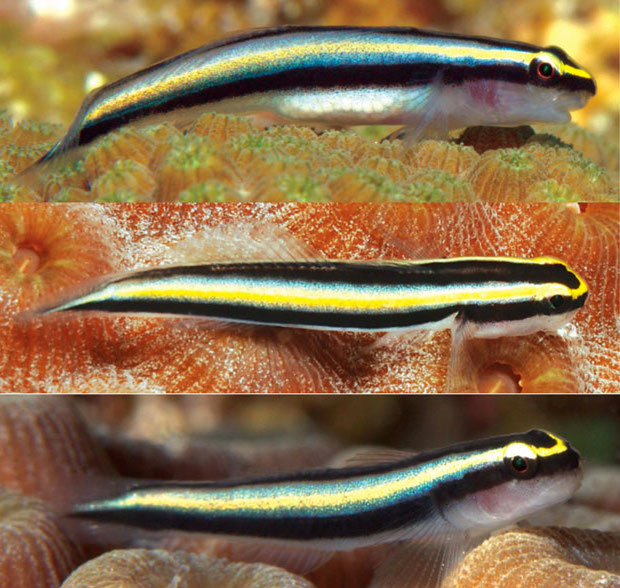A new paper recently published in the Journal of Ocean Science Foundation is a doozy of an article with an incredible wealth of information on the dwarf gobies of the Cayman Islands. The primary intent of the paper was to describe three new species of dwarf gobies from the Cayman Islands in the Caribbean Sea but it also ends up being a great overview of the difference between closely related species of both Elacatinus and Tigrigobius.

It’s funny to think that we already have a hard time telling several of the well known species of cleaner or neon gobies apart, such as the genie, evelyn’s and sharknose gobies but now we can add two more species to the mix. Elacatinus cayman is a new species of cleaner-type dwarf goby which is closely related to E. evelynae and while a specimen was included as a paratype of E. genie, it has less in common with that species.
Some of the more commonly encountered species of cleaner gobies are differentiated based on the color, thickness and length of their lateral “neon” stripe. However it takes a close look at E. cayman to notice that it has a pale sometimes yellow lateral stripes within the blue band that spans the entire length of the body.

Meanwhile E. evelynae can have either a yellow or a blue band running down the length of the body – in specimens with a blue stripe the anterior portion is yellow and narrows to an point within the blue band just behind the head. On the other hand E. genie‘s stripe-within-a-stripe is much less noticeable and it actually widens to become just one wider solid band down the length of the body. Still with us?

OK now the next new species of Caribbean cleaner goby is much easier to identify; Elacatinus centralis is colored with a thin pale stripe on a black body which does not join up at the head like so many others. The Central cleaner goby’s thin stripe begins yellow on the head, fading to white on the body with just the slightest shade of blue coming in towards the end of the body. The most similar looking previously known species of Caribbean cleaner goby to E. centralis is Elacatinus horsti, a species that displays an all-yellow stripe, sometimes with a yellowish snout or small accessory yellow spots on the snout.

Last but definitely not least is a new species of green banded goby in the Tigrigobius genus. Just a couple years ago another new species of Tigrigobius was described, T. rubrigenis which looks like the green-banded goby with thinner body stripes and more noticeable red cheek stripe. The newly described Tigrigobius harveyi featured herein does not sport the same red cheek feature but it does have much more numerous stripes than the commonly available Tigrigobius multifasciatum.

It was quite a project to distill this paper into the basic findings about the three new species. All of these new discoveries were accomplished with the help of DNA barcoding, revealing diversity that would have been really hard to tell apart with morphology and the naked eye alone. If there’s one thing this paper highlights for sure is that DNA analysis techniques are sure to reveal even more cryptic species of reef fish in the future.




